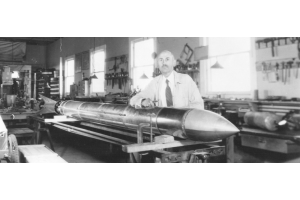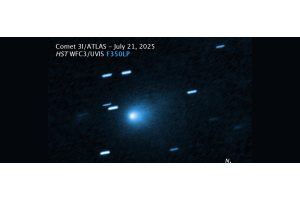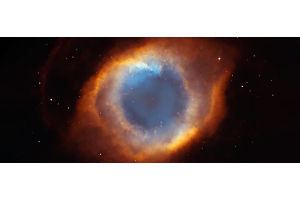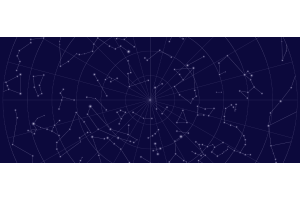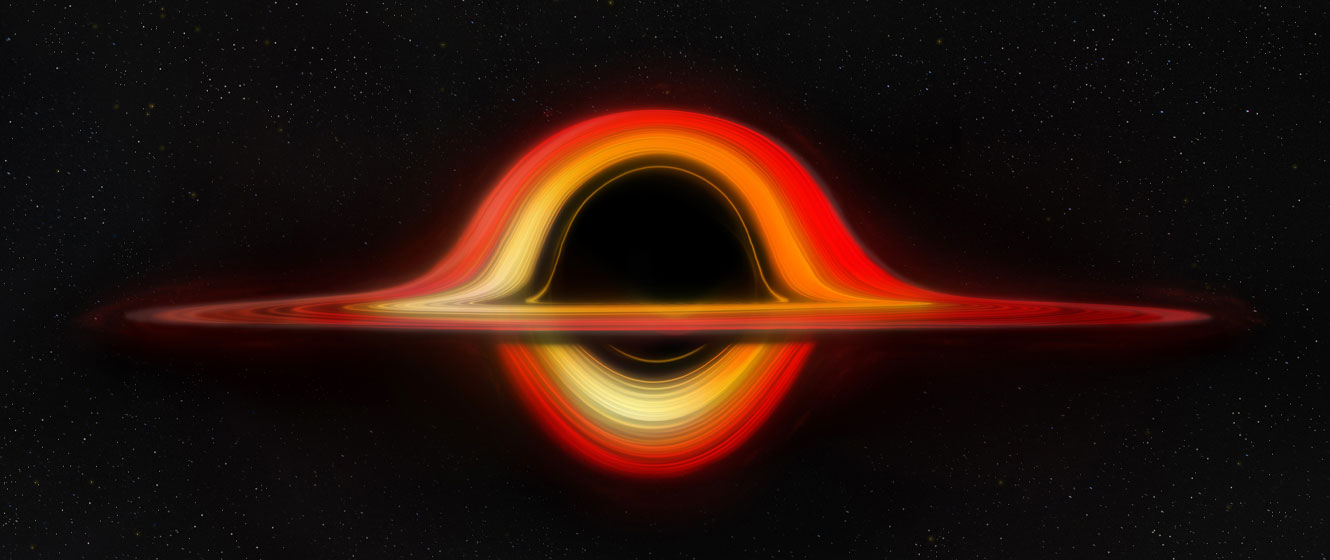
Black holes have an interesting reputation. Everything from websites and books to TV and movies has portrayed them as elusive, mysterious, and generally extremely dangerous to be around. Our imaginations run wild as we hear stories of them consuming everything in their path, and we wonder what might happen to us if we were to ever encounter one. But what exactly is a black hole? And can you see one with a telescope?
What is a Black Hole?
Let’s start with the basics. When a supermassive star reaches the end of its life, it loses stability and collapses in upon itself. The star explodes as a supernova, blasting material out into space, but some material also continues to fall inward. As this material condenses, it grows in mass, with its gravitational influence increasing as a result.
Everything in the universe (including us) has mass, and the greater an object’s mass, the greater its gravitational influence. How does this work?
Let’s imagine you and three friends are holding a blanket above the ground, and each person is holding a corner. At the center of the blanket is a basketball. The blanket isn’t flat, it’s dipped in the center because the basketball is pulling it down. As a result, if you were to drop a tennis ball onto the edge of the blanket, it would fall towards the basketball at the center because the blanket is curved.
That’s how gravity works. Since the black hole (the basketball) is so massive, it bends space and time (the blanket), and any stars (the tennis ball) that venture too close are pulled toward it.
Simply put, to the best of our knowledge, nothing can escape a black hole. Light, a form of radiation, travels by way of photons, a type of elementary particle. Since the gravity of a black hole is strong enough to pull everything toward it (including photons), it’s impossible for light to escape. Consequently, black holes are all but invisible.
How Do We Know Black Holes Exist?
Until 2019, no one had ever taken a picture of a black hole, but we could see evidence of their existence. Since black holes are so massive, they bend space around them (again, like the basketball and the blanket) and this has an interesting effect.
When space bends around a black hole, it causes light to bend around the black hole too. For example, if a black hole lay within the same line of sight as a distant galaxy, the light from the galaxy would follow the curvature of space and move around the black hole. As a result, you’d see a twisted and distorted view of the galaxy on either side of the black hole.
Called gravitational lensing, it’s a way of seeing the telltale signs that the black hole is there. Unfortunately, it doesn’t allow us to see the black hole itself, only its effects.
In April 2017, eight radio telescopes around the world joined forces to observe the black hole at the center of M87, a galaxy some 53 million light-years away in the constellation of Virgo. The data gathered produced the first-ever direct image of a black hole, released in 2019, which in this case, has an estimated mass of about 7 billion Suns.
The hole itself appears black, but surrounding it is a thick, orange donut-shaped ring of material ensnared by its gravitational pull.
Image Credit: EHT Collaboration
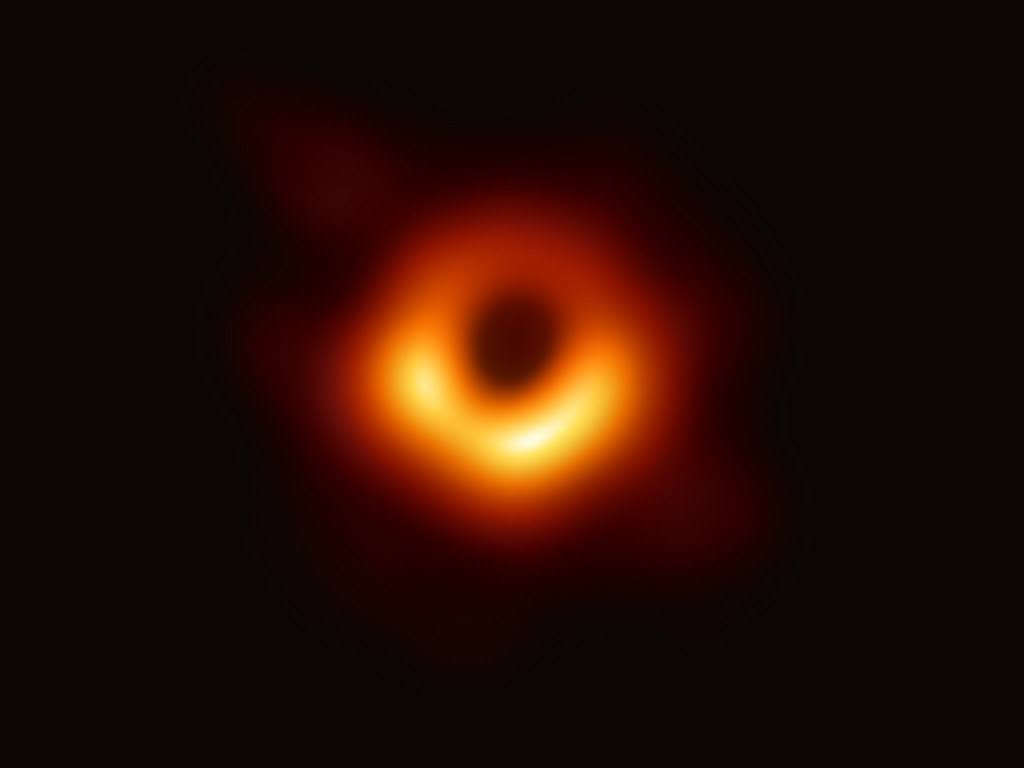
Can You See Black Holes With a Telescope?
Unfortunately then, directly observing a black hole lies far beyond the capabilities of even the largest amateur telescopes, and we must content ourselves with observing their surroundings instead.
More specifically, there are a number of galaxies visible in the night sky that are known to harbor black holes at their core. Let’s start with Messier 87 (M87), the galaxy containing the first black hole to be directly imaged.
As mentioned earlier, it can be found within the spring constellation of Virgo. At magnitude 9.6, it might just be visible with binoculars under dark skies, but you’ll see little more than a tiny, grey misty patch. A magnitude 8.6 star, just to its north, helps to pinpoint its position.
Through a small telescope, it appears as a bright, circular patch, with a core that gradually fades towards the galaxy’s edge. Despite being only slightly larger than our own Milky Way galaxy, it’s estimated to be 200 times more massive.
Image Credit: Stuart Rankin
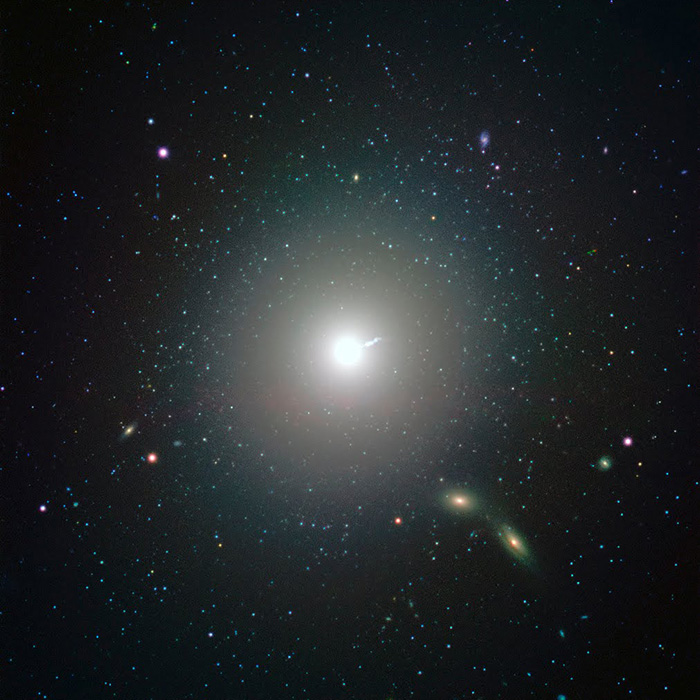
If you’re looking for something a little easier and more impressive, then try Messier 31 (M31), the Andromeda Galaxy. Named for the constellation in which it resides, it’s best seen during the autumn and can be spotted with the naked eye under dark skies.
Binoculars will show a small, slender, light grey oval smudge. The core appears twice as bright as the rest of the galaxy, and you may also be able to spot one of its satellite galaxies nearby.
A telescope reveals more detail and, even at low magnification, the galaxy will dominate your field of view. Besides the bright core, you may also see a line of dark gas and dust along its southeastern edge.
Messier 31 is about 2.5 million light-years away and, with a diameter of over 200,000 light years and a stellar population of a trillion stars, it’s larger than our own Milky Way galaxy. It shows signs of having a double nucleus, with a black hole weighing in with an estimated mass of over 100 million Suns at its center.
Image Credit: Martin Heigan

Lastly, there’s a galaxy that requires no equipment to see and is best observed with just your eyes on a summer’s night. Go outside on a warm evening in July and you’ll see a misty river of light, stretching high above the horizon from north to south. You’re looking at the Milky Way, our own home galaxy, and it hides a dark heart within it.
From our skies, it appears densest toward the south, where the brightest stars of Sagittarius, the Archer, form the shape of a teapot above the horizon. Look just above the spout of the teapot and you’ll see what looks like steam escaping from it. You’re now looking toward the center of the galaxy, some 26,000 light years away, and at its heart is a black hole with a mass of roughly 4 million Suns.
Perhaps unusually, our black hole has four mysterious objects orbiting it, but scientists aren’t quite sure what they are. One theory is that they were once pairs of stars that have since merged, but further studies are required before the answer becomes clear.
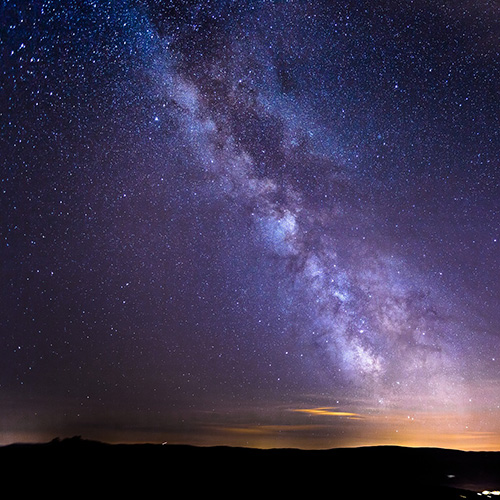
One thing is certain; there are a lot of black holes in the universe and we know very little about them. No one knows with certainty what happens when you get too close and no one knows their eventual fate. Despite the movies of Hollywood, we may never have the chance to properly explore them, leaving us to experience these mysteries with the power of our imaginations.

Learn More
Interested in learning more about astronomy and what's going on in the skies above us? Check out our Astronomy Hub to learn more!







